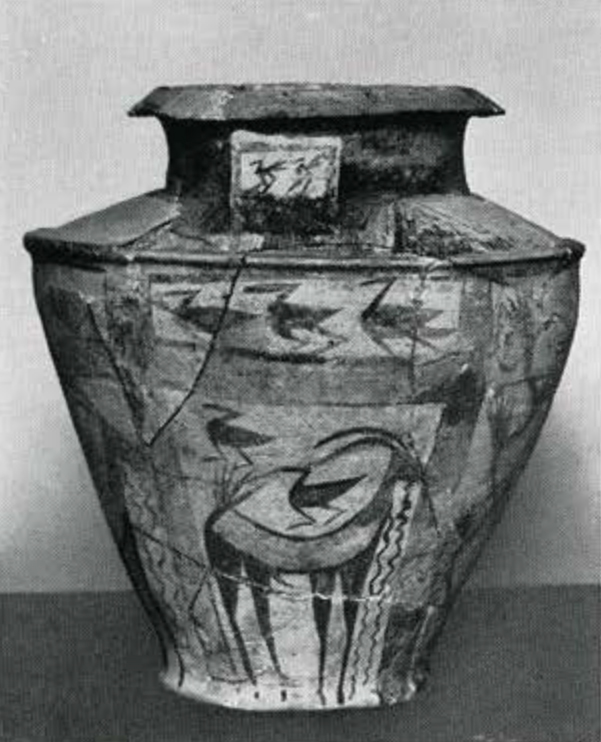
Museum Object Number: 38-10-5
Image Number: 22237
The brilliant decoration of Tell ‘Uqair shows a taste for colours was not foreign to the Uruk period, even when the characteristic al-‘Ubaid painted pottery was gradually replaced by plain prune brown or black wares, highly polished, and by buff wares decorated with incised lines and stamped reliefs. Better vessels were made of copper and precious metals, or cut out of calcite, alabaster, diorite, soapstone or dark volcanic stone. But the tradition survived, and after the Uruk period painted pottery asserted itself, at least in southern Mesopotamia, in a brilliant renaissance, known as the Jemdet-Nasr period. The site, seventeen miles northeast of Kish, was first excavated in 1926 by Professor Stephen Langdon. Associated with the painted vases were found clay tablets with pictographic inscriptions decidedly more recent than the Uruk period. The interval of time between the two periods may be measured by the discovery at Tell ‘Uqair of similar Jemdet-Nasr painted wares and pictographic inscriptions in a small chapel at a level 1.50 m. above the foundations of the Painted Temple oval platform. Good examples (Figure 28) may be seen in the Babylonian Section of the University Museum.

